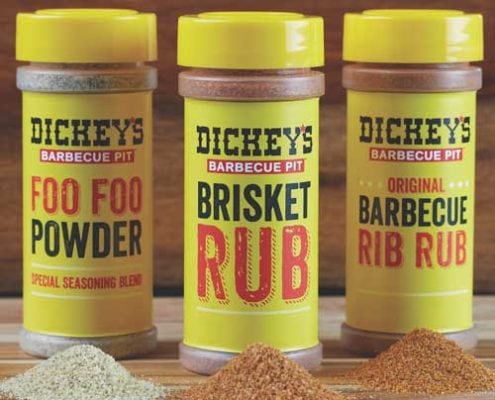What are Pressure-Sensitive Labels?

There is a good chance that most of the products you purchase and the packages you receive have pressure-sensitive labels (PSLs). PSLs are incredibly versatile and make up over 80% of the labels on the market. PSLs can be found on almost every type of product, from medicine to toys to shipping boxes. They identify products, decorate bottles, and display branding.
PSLs are constructed from paper, film, or foil and are compatible with various inks. One of the advantages of PSLs is they don’t require water, glue, or heat to activate. Light and pressure are the only elements needed to adhere them to a product or surface. They come in large rolls or sheets and can be applied by hand or machine. Pressure-sensitive labels offer a range of benefits from saving time and labor to creating visually appealing packaging.
Components of a Pressure-Sensitive Label
Pressure-sensitive labels are fairly simple in construction with only five basic components:
- Liner: The liner is a sheet of paper or plastic film that covers the adhesive backs of the labels, allowing them to be stored without sticking to each other. It is essential in the machine application process as it carries the label to the applicator and releases the label, placing it on the product. The liner protects the label until it’s to be applied. Once a label has been removed, it can be discarded or recycled.
- Release Coat: The release coat is applied to the top of the liner and is designed to resist the adhesive to allow the liner to easily slip away from the PSL during the application process.
- Adhesive: The main benefit of pressure-sensitive labels is that you only need to apply pressure to adhere them to surfaces. The type of adhesive used is determined by several factors, including desired label texture, the storage temperature of the product, the material to which the label will adhere, the environmental conditions the label will need to withstand, the amount of residue left after removal, the amount of pressure needed to apply the label, and if the label is intended to be permanent or removable.
- Face Stock: The face stock is where the ink is applied and what people will see when the label is applied. It can be made of paper, foils, laminates, plastic films, or fabrics. Brands work with PSL manufacturers to find suitable materials and textures that will enhance the artwork on the face stock.
- Topcoat: The topcoat is added to the face stock to protect it and improve clarity and legibility. Top coats help the printing on the PSL stand out and can have a UV coating to ensure the label doesn’t fade.
How do Pressure-Sensitive Labels Work?
Earlier forms of label required solvents, heat, or extreme pressure to make it stick to the product. The reason PSLs are the preferred label is because they only require a light or moderate amount of pressure to apply, and they come in rolls, so they are easy to store.
Since pressure-sensitive labels have the advantage of pre-applied adhesive, they can be simply peeled away from the liner, either by hand or machine, and applied directly to the product or package.
Pressure-Sensitive Label Applications
PSLs are versatile and can be applied to almost any product you can imagine, from wine bottles to toys to shipping boxes. They can also be applied to virtually any surface, including glass, plastic, and cardboard. Some of the most common applications include:
- Automotive Labels: Automotive labels need to withstand extreme environments and tough surfaces. Selecting adhesives and materials that are corrosion resistant and durable is key.
- Chemical Labels: For products containing harsh chemicals, it is important to clearly list product information to meet industry regulations and standards.
- Household Product Labels: Labels on household products need to withstand frequent handling and provide clear information about their intended use.
- Food & Beverage Labels: Food and beverage labels need to be eye-catching to stand out on the shelf. Die-cutting and specialty prints can help these products engage consumers. They also need to be temperature and moisture resistant.
- Wine & Spirits Labels: Like food and beverage labels, wine and spirits labels need to stand out and convey important brand information.
Contact FOCUSales for a Quote on Pressure-Sensitive Labels
FOCUSales specializes in pressure-sensitive labels and can create one to perfectly suit your product. From prime labels to extended content labels to domed labels, FOCUSales can customize a label solution to your specifications. To learn more about our pressure-sensitive label offerings, request a quote from us or contact us for today.




Comments are closed